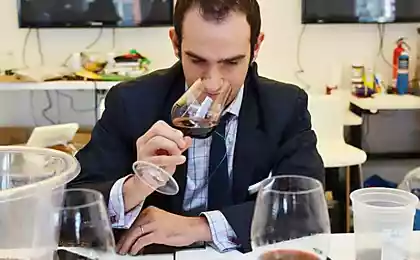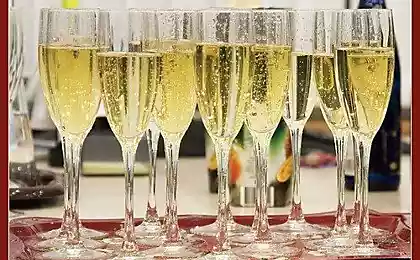677
How to choose the right wine (10 photos)
Of all the incredible amounts of alcoholic beverages around us, only wine has a flair indestructible nobility. Consider a simple situation - you come to visit a friend with his favorite whiskey and automatically migrate to the category alkoorientirovannyh citizens, for whom the result is more important than the process. But replace whiskey wine, and, miracle - your romantic index will go up dramatically. How to avoid mistakes when buying wine?

Rule 1: The ratio of "cheap-good" wine is not working

The rule "the more the better" working steadily for wines from South America, Australia and other non-European countries. This category consists of the sum of objective reasons, such as manufacturing, transportation, allowances, etc. Seller. In the case of European wines with "names" can work only for premium brand. Similarly, the variety of little-known distillery can cost very cheap.
Rule 2: Do not buy wine at a discount

Before selling a product that until the end of shelf life left little supermarkets will do everything to shove stale product. But we know that the wine is not spoiled. It follows from this that a discount may only be sold openly defective goods, there is little related to this wine.
Rule 3: Choose dry wines

"Semi-sweet" wine - a term that has circulated only in the territory of the former CIS. Nowhere in the world such wines do not drink. To produce such a low-quality wines using grapes, waste production, as well as adding to a considerable number of colors and sweeteners. With the same success you can enjoy a wonderful drink "Grape Day" package 1, 5 liters.
Rule 4: Aim for the interval from 700 to 1200 rubles
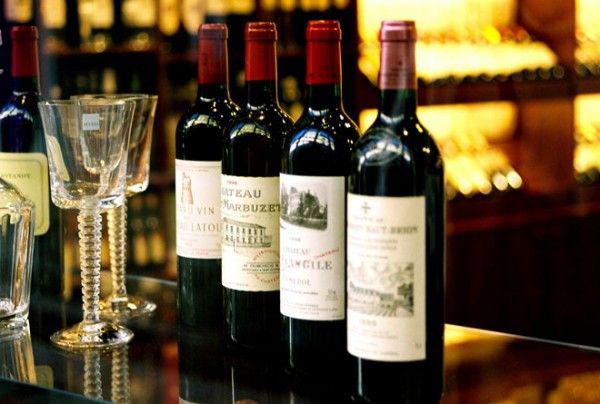
Transport, packaging, the margin for the excise tax, and many other details that affect pricing, ultimately affect the way how much you pay at the cash register. This price range - another tool in order to understand what is in front of you a good and inexpensive wine. Cheaper will cost 700 rubles only swipes like "Arbat" and the wine expensive thousand rubles and you can go to a restaurant.
Rule 5: Beware of high-profile names

The wine industry operates an unwritten rule - not to engage in decorations, indicate on the label a grade, year and manufacturer. Sounding name like "Temptation nuns" an invention of marketing and should scare experienced vinolyuba.
Rule 6: Feel bottle

A sure sign of quality wine - heavy bottle with broad "shoulders" slightly tapered towards the bottom. Foil tube packing also says a lot about the quality of the content. Therefore, a quick tactile inspection of the bottle can strengthen you in your decision to purchase grape drink.
Rule 7: The point in a traffic jam
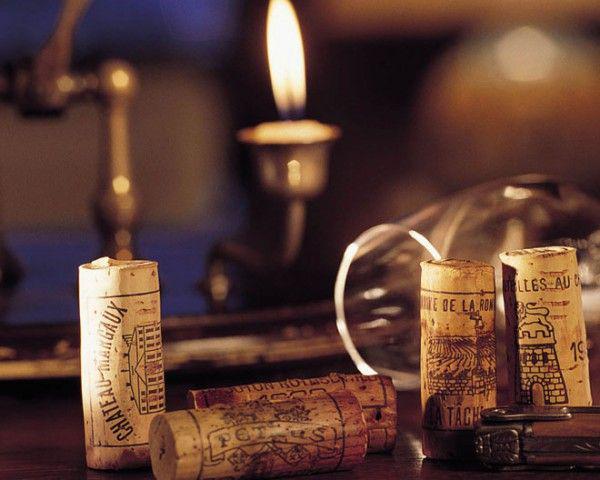
The stereotype that good wine is simply obliged to have a classical cork from cork, lives in each of us. But it turns out that a good wine can have the usual tin cap. Many of the producers refused to classical technology without losing quality. Keep this in mind.
Rule 8: Do not make yourself a sommelier from
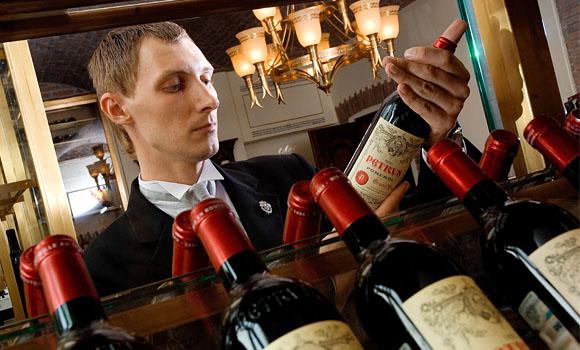
Once you begin to focus on the varieties of grapes and try to understand what is different from the 2010 harvest collection in 2012, you can safely go back to item number 1 wine of our quest. Grape plays little role in the quality of wine, but an indication of it have to be on the label. If such an indication is not likely the wine is made from waste materials or second-rate.
Rule 9: Champagne-not an alternative

If the choice of wine you've come to the logical disrepair, it is not necessary to seek an alternative to the shelves with champagne. It is unlikely that you will be able to find a comparable price for a drink, while made from grapes and not from apple pomace.
Rule 10: Drink like a gentleman

Value fault lies not only in the quality, but also in the method of use. Well-chosen snacks can reveal the true taste of the wine, surprising that this has not happened before.

Rule 1: The ratio of "cheap-good" wine is not working

The rule "the more the better" working steadily for wines from South America, Australia and other non-European countries. This category consists of the sum of objective reasons, such as manufacturing, transportation, allowances, etc. Seller. In the case of European wines with "names" can work only for premium brand. Similarly, the variety of little-known distillery can cost very cheap.
Rule 2: Do not buy wine at a discount

Before selling a product that until the end of shelf life left little supermarkets will do everything to shove stale product. But we know that the wine is not spoiled. It follows from this that a discount may only be sold openly defective goods, there is little related to this wine.
Rule 3: Choose dry wines

"Semi-sweet" wine - a term that has circulated only in the territory of the former CIS. Nowhere in the world such wines do not drink. To produce such a low-quality wines using grapes, waste production, as well as adding to a considerable number of colors and sweeteners. With the same success you can enjoy a wonderful drink "Grape Day" package 1, 5 liters.
Rule 4: Aim for the interval from 700 to 1200 rubles

Transport, packaging, the margin for the excise tax, and many other details that affect pricing, ultimately affect the way how much you pay at the cash register. This price range - another tool in order to understand what is in front of you a good and inexpensive wine. Cheaper will cost 700 rubles only swipes like "Arbat" and the wine expensive thousand rubles and you can go to a restaurant.
Rule 5: Beware of high-profile names

The wine industry operates an unwritten rule - not to engage in decorations, indicate on the label a grade, year and manufacturer. Sounding name like "Temptation nuns" an invention of marketing and should scare experienced vinolyuba.
Rule 6: Feel bottle

A sure sign of quality wine - heavy bottle with broad "shoulders" slightly tapered towards the bottom. Foil tube packing also says a lot about the quality of the content. Therefore, a quick tactile inspection of the bottle can strengthen you in your decision to purchase grape drink.
Rule 7: The point in a traffic jam

The stereotype that good wine is simply obliged to have a classical cork from cork, lives in each of us. But it turns out that a good wine can have the usual tin cap. Many of the producers refused to classical technology without losing quality. Keep this in mind.
Rule 8: Do not make yourself a sommelier from

Once you begin to focus on the varieties of grapes and try to understand what is different from the 2010 harvest collection in 2012, you can safely go back to item number 1 wine of our quest. Grape plays little role in the quality of wine, but an indication of it have to be on the label. If such an indication is not likely the wine is made from waste materials or second-rate.
Rule 9: Champagne-not an alternative

If the choice of wine you've come to the logical disrepair, it is not necessary to seek an alternative to the shelves with champagne. It is unlikely that you will be able to find a comparable price for a drink, while made from grapes and not from apple pomace.
Rule 10: Drink like a gentleman

Value fault lies not only in the quality, but also in the method of use. Well-chosen snacks can reveal the true taste of the wine, surprising that this has not happened before.




